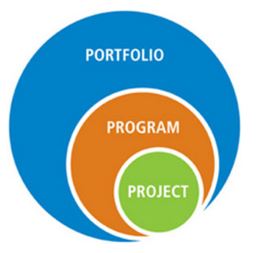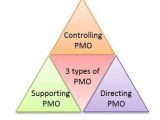
Programs and Portfolios according to PMBOK® Guide – Sixth Edition
28 April 2020Programs and Portfolios according to PMBOK® Guide – Sixth Edition
According to the PMBOK Guide, program management focuses in the interdependencies within a project in order to determine the optimal approach for managing the project. Simply put, programs are bunches of projects that are all together and interrelated in some sort of capacity.
We see them roll into a program for more efficient management and so that resources can be shared between them. Oftentimes, by working in a program management structure, we can obtain benefits that are not available by simply managing projects on an individual basis.
These focus on project interdependencies, areas where resources might be able to be combined or used, areas where scope might interlap between projects and more. Program management finds the optimal combined approach to accomplishing several interrelated projects in the way that’s most efficient for the organization as a whole.
Portfolio management, on the other hand, is defined as the centralized management of one or more portfolios in order to achieve strategic objectives.
These portfolios can consist of both programs and of projects. Oftentimes, we may see a complex program broken down into not only several different projects but also subprograms as well that may have projects of their own.
In other cases, the structure may be more simple in nature with a single program and several projects running underneath it. In other case, we may have projects that are important to the organization but don’t share enough in common with other projects in order to merit a program relationship.
As such, we could consider those projects part of the portfolio, just as much as we do those that roll through a program first.
Let’s take a look at a more real-world example here using our fictitious rocket company, Apogee Ventures. Here, we might see that there are a number of different large-scale programs within our organization.
We’re focusing on manned launches in the future as well as on commercial payloads like satellites that we can take to orbit in addition to shared systems that may be able to help both of these as well as other opportunities that we may have to grow the business in the future.
Further, we may have a separate project that doesn’t roll directly into any of these but instead is focused on building our brand, both with the public at large as well as with the government agencies and corporations that may serve as our customers for launch missions moving forward. Within each of these different programs, we might see a variety of separate projects, as well as a variety of different subprograms.
Here, the capsule, life support system and platform integration might all be considered separate projects under the manned program, while under mission development, a subprogram, we might also see mission training and orbital science listed as separate projects.
As far as commercial payload goes, we may have payload certification, satellite development, and pricing model generation all serving different project teams within this program, while for shared systems, launchpad construction might be its own project, while two different phases of rocket development, both on control systems and propulsion, are interrelated enough that we consider using a program to manage both of them together.
Portfolio management works to maximize the value of projects across both programs and projects for the organization. It helps to align programs and projects to what top-level organizational objectives might exist, and help to set organization-wide policies, procedures, and resource allocations that all different project teams and programs would subscribe to.
As you might guess, there’s no optimal method to the way that we structure projects, programs, and portfolios for every organization. Instead, this will vary based on what the organization’s needs might be, the organization structure at large, and what best fits the strategies and objectives that the organization holds.
Achieving objectives using project frameworks, however, leads to more sustainable performance and results, which is why we often see projects working through these program and portfolio hierarchies in order to better manage our resources and to better meet the larger strategic objectives of organizations.








